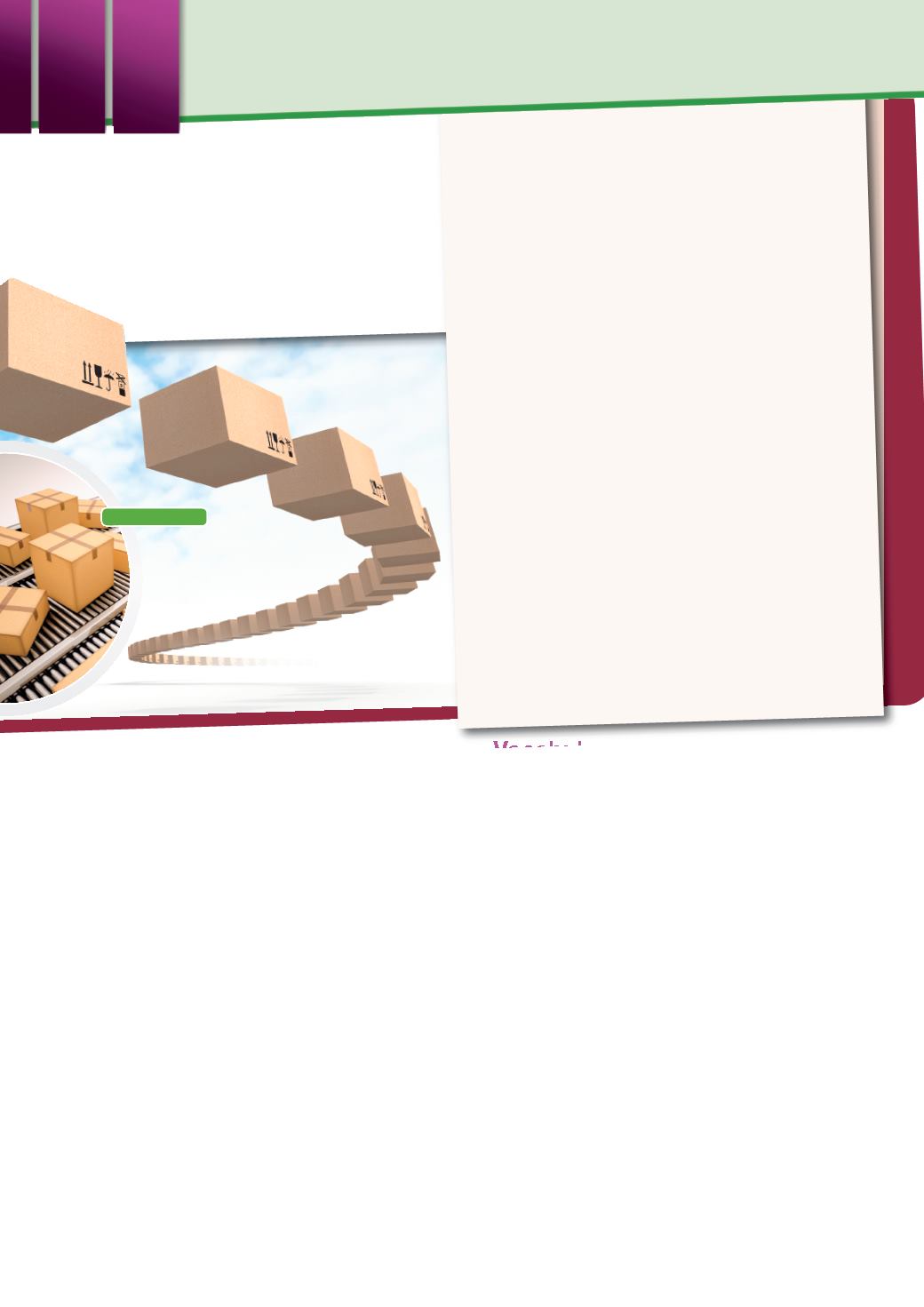
30
Vocabulary
●
3
Match the words or phrases (1-7) with the
definitions (A-G).
1
___
live storage
5
___
holding cost
2
___
simple storage
6
___
handling cost
3
___
complex staging
7
___
occupancy cost
4
___
high-density storage
A
a system that allows easy access for putting
away items, picking, or retrieval
B
the price that is paid to put an item in storage
and to retrieve it
C
the cost of using a space
D
a system that is designed to reduce space per
storage position
E
the price that is paid to keep a stock of goods
in storage
F
the process of storing items on a conveyor belt
or live rollers
G
a mechanical system for short-term
accumulation, presentation, and picking
Reading
●
2
Read the textbook excerpt. Then, choose
the correct answers.
1
What is the purpose of the excerpt?
A
to list examples of mechanical equipment
B
to explain how to minimize space during
storage
C
to describe handling methods and their costs
D
to contrast simple storage with complex
staging
2
Which of the following is NOT a storage cost?
A
handling
C
occupancy
B
holding
D
accumulation
3
Why do logisticians sometimes use live storage?
A
to permit easier accumulation of materials
B
to include versatility and expandability
C
to use more vertical space during storage
D
to allow for larger aisle allowances
Get ready!
●
1
Before you read the passage, talk about
these questions.
1
What are the four classes of storage and
handling?
2
What are the different costs associated with
storage?
Storage equipment is used to hold and handle materials
between operations. There are four handling methods. Each
requires different equipment:
•
Simple storage
allows easy access for put-away,
picking, and retrieval. Yet, it requires more space per
unit. This is due to larger aisle
allowances
and less
vertical space. Simple storage uses bin shelving and
pallet racking.
•
Complex staging
is good for temporary
accumulation
,
presentation, or picking. It is good for low-flow materials
with large inventories. Sometimes, it is mechanized for
speed. Complex staging often uses shuttle systems.
•
High-density storage
minimizes space by using more
vertical space. However, it is slower and costlier than
other methods. Bulk floor stacking is an example of
high-density storage.
•
Live storage
uses conveyor belts and live rollers. Its
purpose is to allow easier accumulation.
All storage methods require
handling costs
.
Holding costs
and
occupancy costs
, including
housekeeping
, may also
be incurred. Logisticians also need to consider
intangibles
.
These include needs for
expandability
and
versatility
.
Storage
Analysis
Storage Analysis
14
live storage


